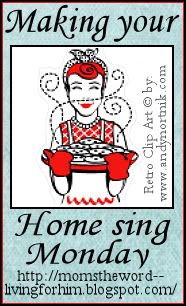My kids love the outdoors, and what a better way to integrate learning in their outdoor activities. One fun summer activity that my kiddos enjoy is what we called, Kids’ Construction Zone. We have a small structure area with slide and two swing sets within this rectangular box filled with wood chips. This is our construction site. To add to the fun, I bought some hats and dump trucks from a local thrift store. We’ve also collected some gardening tools over the years so this is a part of their construction set. (The best time to pick up some gardening gear is after spring when stores try to get rid of their merchandise.)
Prior to their play, we talked about what we see at a construction site: what the workers wear, signs they see, and colors. As a result, the following pictures are the creativity and learning experience while they play.
Things we have in our Kids’ Construction Zone: (I’m sure you’ll come up with other fun items)
- Kid’s Gardening Gloves
- Dump Trucks of varies sizes
- Hard Hats
- Shovels
- Trowels
- Hoe
- Hand Rakes
- Buckets
- Old Vinyl Table Cloth (if your kids wanted to make a sign)
Here are my three workers ready to start their day!
Mei scooping with her hand-held shovel.
Digging and filling their dump trucks.
Mei hoeing.
This cool dump truck actually tilts when a knob is turned!
This dump truck is pretty good for riding too!
Day 2: Buddy, my big boy, wanted to make a sign. I provided him with an old vinyl picnic table cloth (so it’s waterproof) and now all the sibblings are helping.
We hung that sign. “Kids at Work” sign is up and now it’s official!
Now the three kiddos record their fun in their journals.
Here’s Buddy’s journal entry for his time at the Kids’ Construction Zone. He was told to draw a picture and write about it. This is his effort in sounding out words. In the meantime, Chico and Mei were just drawing whatever came to mine like apples and bananas.
As an extension, your kids might like:
Mike Mulligan and His Steam Shovel.
For more great ideas on outdoor activities, visit Flights of Whimsy.
And there you have, an outdoor activity that’s fun, inexpensive, and a great learning tool. Do you have your own that you would like to share? Please comment.
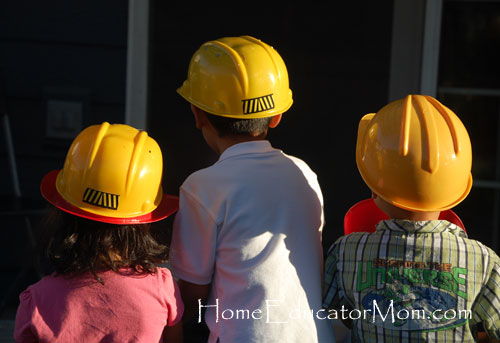
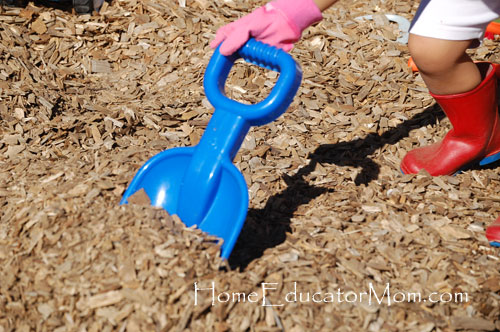
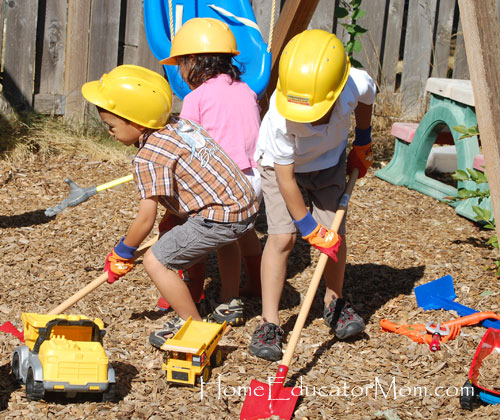
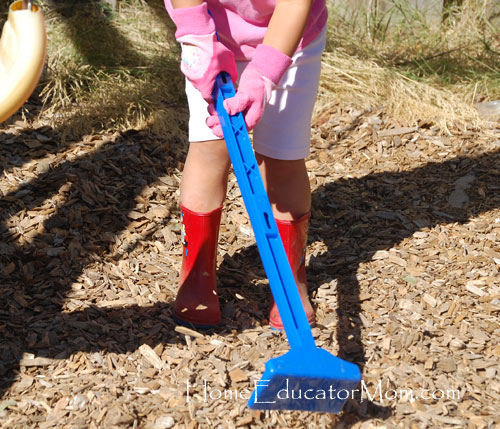
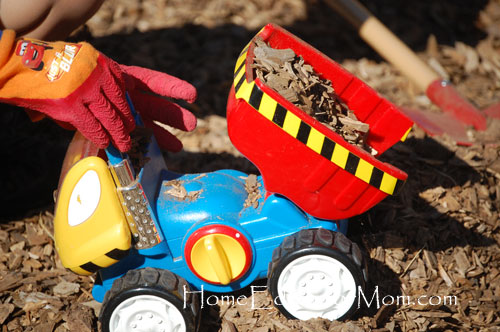
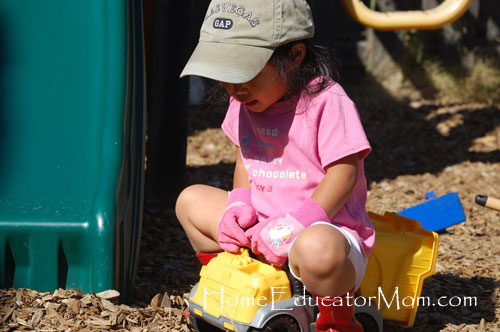
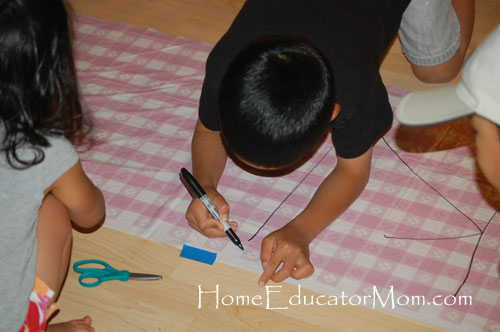
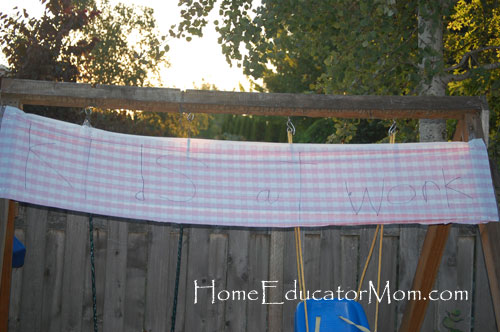
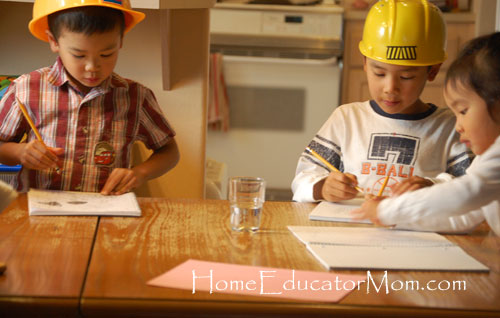
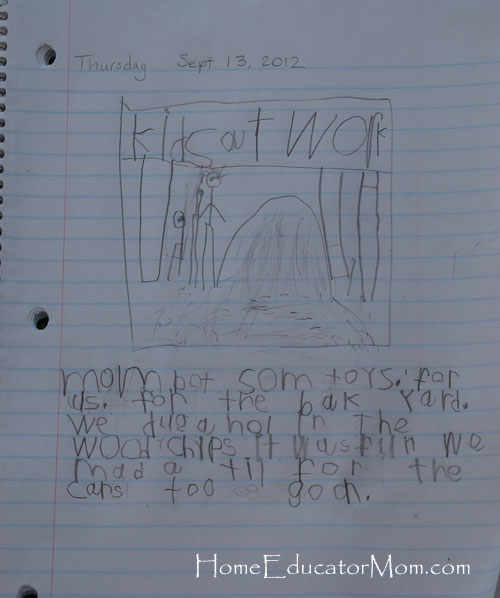

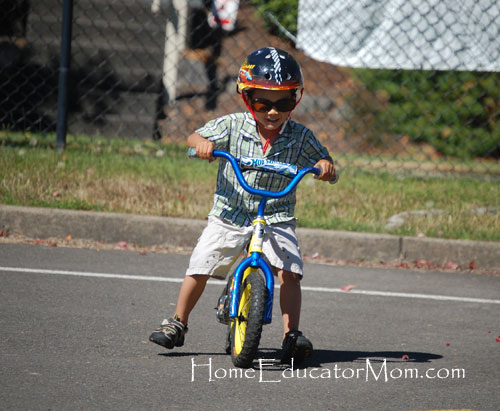
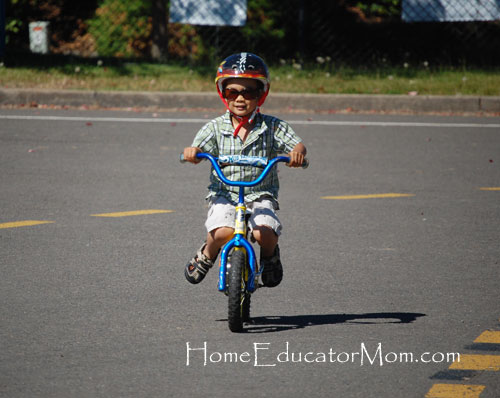
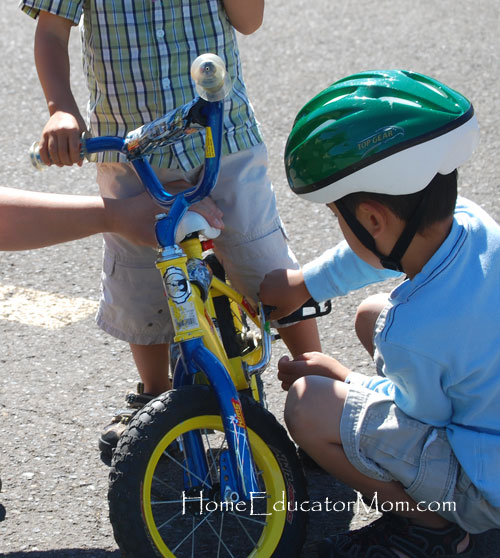
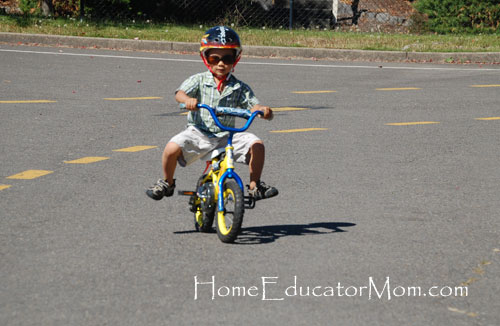
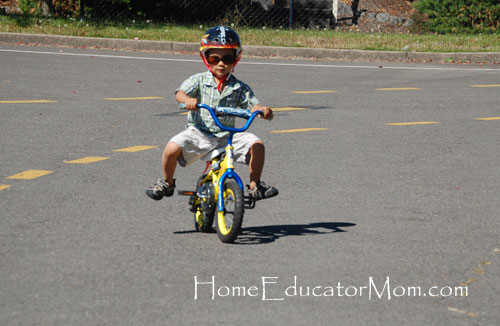
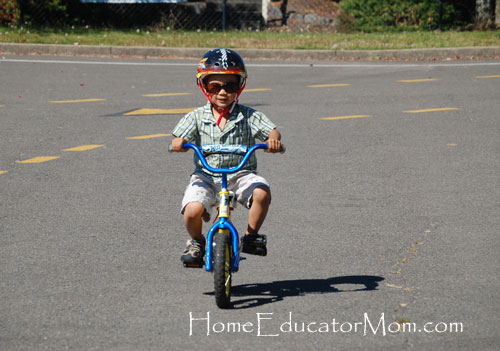

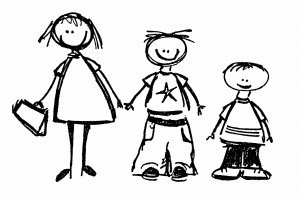
 Hi, I'm Betty and welcome to Home Educator Mom. Whether you are a homeschooling family or not, we’re all called to be our kids’ first teachers. Our desire here is to encourage moms as we walk this path of training and equipping our children. We hope you will stay a while and join us on this journey: learning and sharing life together. Meet our
Hi, I'm Betty and welcome to Home Educator Mom. Whether you are a homeschooling family or not, we’re all called to be our kids’ first teachers. Our desire here is to encourage moms as we walk this path of training and equipping our children. We hope you will stay a while and join us on this journey: learning and sharing life together. Meet our 








